If you’re familiar with Middle Eastern cooking, then you’ve likely encountered the mysterious spices of baharat and ras el hanout.
Both these flavors are a staple in many dishes across North Africa and the Middle East – yet they have distinct differences between them.
What sets each flavor apart? Are there any similarities between them?
If so, in what way can they complement one another on your plate?
In this blog post, we’ll explore every aspect of baharat and ras el hanout – from their historical context to their unique ingredients -to give you a full understanding of their respective roles in the kitchen.
Get ready to take your culinary knowledge up a notch.

What is Baharat?
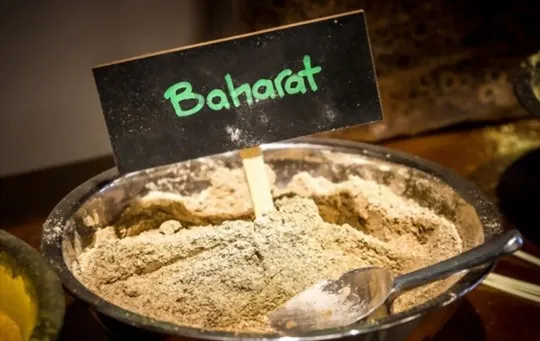
Baharat is a savory and aromatic spice blend that is commonly used in Middle Eastern and North African cuisine.
This traditional mix typically consists of a variety of spices such as cumin, coriander, cinnamon, and black pepper, to name a few.
The fusion of herbs and spices creates a unique and flavorful seasoning that can add a distinctive flavor to any dish.
Baharat’s deep spicy flavor works well with a variety of proteins like beef, lamb, and chicken, and it can also be used in vegetarian dishes, such as stews and soups.
The warming spices in Baharat can add depth and complexity to vegetable dishes, and fuses perfectly with rice or couscous.
Although you may not be familiar with it, Baharat is an essential ingredient that can transform any dish from ordinary to extraordinary.
What is Ras el Hanout?
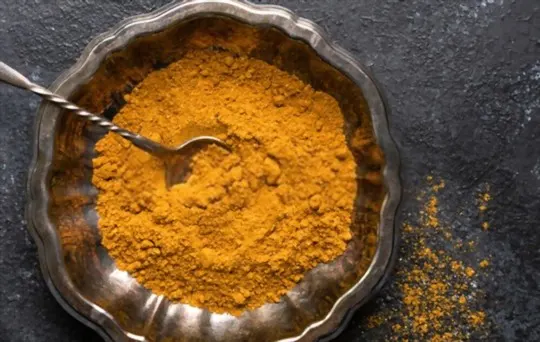
Ras el Hanout is a unique blend of spices that has captured the hearts and taste buds of food enthusiasts worldwide.
Although its origins are unknown, the name roughly translates to “top of the shop” in Arabic, indicating that it is a premium spice blend.
It typically contains up to 30 different spices, including cardamom, cinnamon, coriander, cumin, and paprika.
This exquisite combination of spices results in a complex flavor profile that is both savory and sweet, with a warming and mildly spicy kick.
Ras el Hanout is a staple in Moroccan cuisine and is commonly used to season meat, poultry, rice, and couscous dishes.
Its versatility has also made it popular in international cuisine, where it is used to enhance soups, stews, and even desserts.
The secret behind the perfect Ras el Hanout blend lies in the skillful balance of spices, and each spice merchant has their own unique recipe.
This makes it an exciting spice to experiment with and discover the perfect combination to take your cooking to the next level.
Differences Between Baharat and Ras el Hanout

Baharat and Ras el Hanout are distinct blends of spices used in Arab and Middle Eastern cuisine.
While both blend spices to create flavourful dishes, they differ in their composition and origins.
Origin and History
Spices have been used in cooking for thousands of years, to add flavor, aroma, and color to dishes.
Baharat and Ras el Hanout are two spice blends that have provided a distinctive touch to Middle Eastern and North African cuisines for centuries.
Baharat describes a blend of spices which can vary from one region to another, but are commonly made up of black pepper, cinnamon, coriander, cumin, cloves, cardamom, nutmeg, paprika or chili pepper.
Originally from the Levant region (including modern-day Syria, Lebanon, Jordan and Israel), it spread throughout the eastern Mediterranean region as well as Iraq and Iran.
Ras el Hanout is another complex mixture of spices originating in North Africa.
It roughly translates to “top of the shop,” reflecting its reputation among spice merchants as their best blend.
Its composition may vary greatly depending on the artisan making it; however it typically includes cumin seeds, turmeric, cinnamon bark chips, dried rose petals, allspice berries and others.
Despite their different origins and ingredient compositions however both baharat and ras el hanout blends are highly fragrant with aromatic notes that help elevate savory dishes.
Ingredients Used
Numerous exotic spices may be added for flavor and aromas to your meals.
These include Baharat and Ras el Hanout among other options.
Both are used extensively in the Middle East and North Africa and have specific ingredients that add their unique flavor.
Baharat is a spice mix consisting of cinnamon, cumin, coriander, paprika, black pepper, cardamom, nutmeg, and cloves.
It adds a rich sweetness with a hint of heat to dishes such as kebabs and meatballs.
Ras el Hanout is a spice blend containing root ginger, cardamom pods, cassia bark or cinnamon sticks depending on the region, coriander seeds, cumin seeds, allspice berries or peppercorns depending on the recipe variation preferred by the vendor.
Its unique profile adds depth and complexity to tagines and stews.
A crucial aspect of choosing which spice blend to use is understanding how it will complement your dish.
Experimenting with them will help you identify your taste preferences.
Flavor and Aroma
The bouquet and essence are imperative factors in deciding which spice blend to use in your cooking.
Baharat results from a mix of warm spices like cinnamon, cardamom and cumin, with a touch of savory sweetness.
Ras el Hanout’s flavor profile involves a combination of around twenty differing Middle Eastern spices with an undeniably floral aroma.
The difference between both balances on the type of context you’re intending to use them in.
Baharat’s moderate sweetness and subtle spicy tones pair well with lamb dishes or rice-based recipes, whereas Ras el Hanout is more pungent and can overwhelm milder meals.
Nonetheless, the complexity of flavors in Ras el Hanout works exceptionally well for baked vegetables and meat-based dishes.
Both have stronger preferences that favor certain types of cuisine, so experimenting with these options will lead you to a better understanding of what works best for your culinary preferences.
Culinary Uses
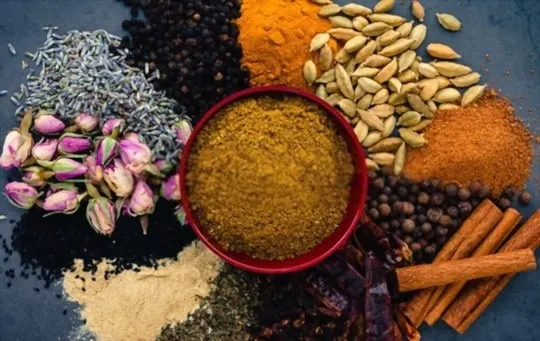
The usage of Baharat and Ras el Hanout has been prevalent for a long time.
Both lend a unique flavor to meals that differentiate them from one another.
These spice blends are perfect for adding an aromatic and spicy profile to any dish, thus enhancing the taste significantly.
Baharat and Ras el Hanout have their own distinctive culinary uses in Middle Eastern cuisines.
Baharat is typically used to season meat, soups, stews, and grilled vegetables.
It adds warmth, sweetness, and a complex aromatic flavor to dishes like lamb kebabs, chicken biryani, mujadara lentils, or tomato-based sauces.
On the other hand, Ras el Hanout is the perfect blend for seasoning couscous dishes, rice dishes like pilaf or paella, tagines that involve slow-cooked meat in Moroccan cuisine or chickpea-spiced stews in Tunisia.
Ras el Hanout adds a beautiful color and exotic aroma with sweet-savory notes to all its preparations.
One thing to keep in mind while choosing either of these spice blends is that they both contain spices that might not be suitable for everyone’s taste buds.
Thus it’s essential to sample it first before using it so that one can adjust the quantity or substitute any ingredient according to individual preferences.
Therefore, choosing between Baharat and Ras el Hanout comes down to the desired flavor profile of your dish.
If you’re looking for warm robust flavors with slightly sweeter notes dominated by cinnamon dominantly with hints of black pepper- go for Baharat.
But if you want more depth in warm colors such as reds/orange/yellows with slightly sweet tones dominated by cumin seeds with hints of ginger-dominated – go for Ras el Hanout.
Regional Variations
The diversity of spices in global cuisine leads to a wide range of flavoring possibilities.
When it comes to regional variations, there are a plethora of options that differ based on location and culture.
While some spices have become widespread across various regions, others remain exclusive to a particular region or country.
Some of the most popular regional variations include Indian curry blends, Middle Eastern spice mixes, Nigerian suya spice blend, and Chinese five-spice powder.
Each blend boasts unique ingredients and flavor profiles, making them distinguishable from one another.
When exploring these diverse spice blends, food enthusiasts may wonder about the differences between certain blends such as Baharat and Ras el Hanout.
Both are traditional Middle Eastern spice blends that add depth and complexity to dishes.
Baharat typically features pepper, cumin, coriander, cinnamon, cloves along with cardamom or nutmeg; Ras el Hanout includes sweet paprika with cinnamon like Baharat but also has ginger and turmeric.
While both blends contribute warmth and fragrance to dishes—making them perfect for meat rubs or rice-based dishes—Baharat’s robust taste makes it a more versatile option when cooking lamb or beef while Ras el Hanout is best used in soups and tagines.
Exploring the unique flavors of regional spices can bring excitement to kitchens globally—and learning how each spice mix can enhance your meal creates an exceptional culinary experience.
Similarities Between Baharat and Ras el Hanout
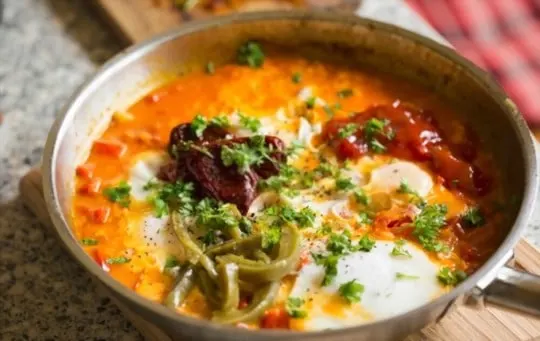
Both Baharat and Ras el Hanout belong to the family of spice blends and share various similarities.
Both seasonings are widely used in Middle Eastern and North African cuisine to enhance the flavor profile of dishes.
In addition, they both consist of a fusion of spices like cumin, cinnamon, coriander, and cloves, among others.
However, there are variations between the two blends.
Baharat generally has more chili peppers mixed into it compared to Ras el Hanout.
Additionally, Ras el Hanout usually contains more exotic and rare ingredients like lavender, monk’s pepper, orris root powder, and galangal.
While Baharat is primarily used for spicy meat dishes like kebabs or grilled poultry, Ras el Hanout is ideal for slow-cooked stews and tagines.
It’s essential to note that there are many different variations of both spice mixes based on regional preferences or specific recipes.
Therefore the ingredients may change depending on who is making it.
Ultimately choosing between Baharat or Ras el Hanout will depend on the dish you’re preparing and personal preference.
How to Use Baharat and Ras el Hanout in Cooking?
Baharat and Ras el Hanout are two popular spice blends used in Middle Eastern and North African cooking, respectively.
Both of these blends have a unique taste and can be used to add flavor to a wide variety of dishes.
To use Baharat in cooking, you can mix it with olive oil and use it as a rub for meat or sprinkle it on roasted vegetables.
Ras el Hanout can be added to couscous or rice dishes or can be used as a seasoning for lamb or chicken.
When it comes to using these spice blends, the quantity you use can vary based on your personal preference.
While Baharat is known for its strong flavor profile, Ras el Hanout has a more subtle taste.
Depending on how much spice you want in your dish, the amount of each blend you add may differ.
In addition, both Baharat and Ras el Hanout contain multiple spices, making their exact composition subjective.
Some variations may include cumin, coriander seeds, cinnamon, nutmeg, paprika and turmeric while others may have different ingredients.
Regardless of which blend you choose to cook with, make sure that it is fresh as spices lose their flavor over time.
Knowing when to add each spice is also important for best results in your cooking endeavors.
By experimenting with these unique spice blends in your daily cooking routine, you can bring new flavors to traditional dishes whilst adding depth of taste.
Where to Buy Baharat and Ras el Hanout?
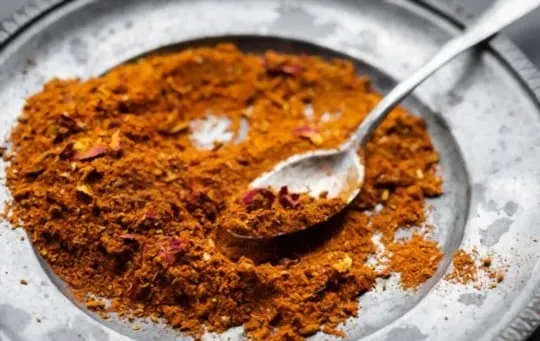
When it comes to purchasing Baharat and Ras el Hanout, there are a variety of options available to consumers.
Here are some ways to find these popular Middle Eastern spice blends:
- Local Specialty Food Stores: Many specialty food stores carry an array of authentic international ingredients including Baharat and Ras el Hanout. Look for independent shops that cater to ethnic communities or more upscale markets with an extensive spice selection.
- Online Retailers: Virtually every grocery store is now online, and easily accessible without having to go out. You can easily purchase Baharat and Ras el Hanout from a variety of online retailers that specialize in international grocery products.
- Specialty Spice Shops: Several niche gourmet merchants deal specifically in spices from around the globe. They provide hard-to-find spices like Baharat and Ras el Hanout, which may not be readily available elsewhere. Check your local yellow pages or Google search for “spices” or “gourmet foods.”.
- Farmers’ Markets: you’d be shocked by how many fresh herbs you can find at farmers’ markets, plus it’s a great way to support local vendors while sampling regional flavors. Not only will you have the opportunity to sample different spices before buying, but you’ll also learn about culinary techniques utilized in the area as well.
- Middle Eastern Grocery Stores: All major metropolitan areas have many middle-eastern owned grocery stores that specialize in halal meat, middle eastern cheese, olives, dates etc. those stores carry all kinds of herbs and spices including both Baharat & Ras Al Hanout.
Conclusion
All in all, it’s clear that both Baharat and Ras el Hanout play a vital role when it comes to seasoning.
Whether you choose to buy pre-made mixtures of these delicious spice blends or prefer to make them from scratch, the choice is yours.
Whether you are making an Eastern flavored dish for your vegan friends, or date night dinner for two, these spice blends will give your cooking an exotic twist.
Be sure to taste as you cook so that the flavors are just right for your palate and for that perfect aroma that makes dining out of this world.
As always, don’t be afraid to experiment with different spices and create your own tailor-made versions of either Baharat or Ras el Hanout.
Who knows? You may discover the next big thing.
All we can say is that since understanding how they differ helped us learn more about these two flavorful blends; we now have newfound respect and admiration fort hem both – and our palates just thank us dearly every time.
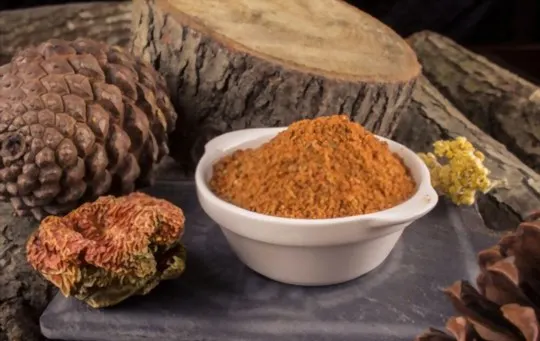
Baharat vs Ras el Hanout: Which is a Better Option?
Ingredients
- Baharat
- Ras el Hanout
Instructions
- Choose between two items based on your preference and availability.
- Follow the cooking directions for your chosen option, using the appropriate ratio of ingredients.
- Prepare it according to your desired recipes.
- Incorporate them into your dish, adjusting the amount to suit your taste.
- Enjoy the unique taste experience and experiment with different dishes to explore their versatility.

Andrew Gray is a seasoned food writer and blogger with a wealth of experience in the restaurant and catering industries. With a passion for all things delicious, Andrew has honed his culinary expertise through his work as a personal chef and caterer.
His love for food led him to venture into food writing, where he has contributed to various online publications, sharing his knowledge and insights on the culinary world. As the proud owner of AmericasRestaurant.com, Andrew covers a wide range of topics, including recipes, restaurant reviews, product recommendations, and culinary tips.
Through his website, he aims to inspire and educate fellow food enthusiasts, offering a comprehensive resource for all things food-related.
